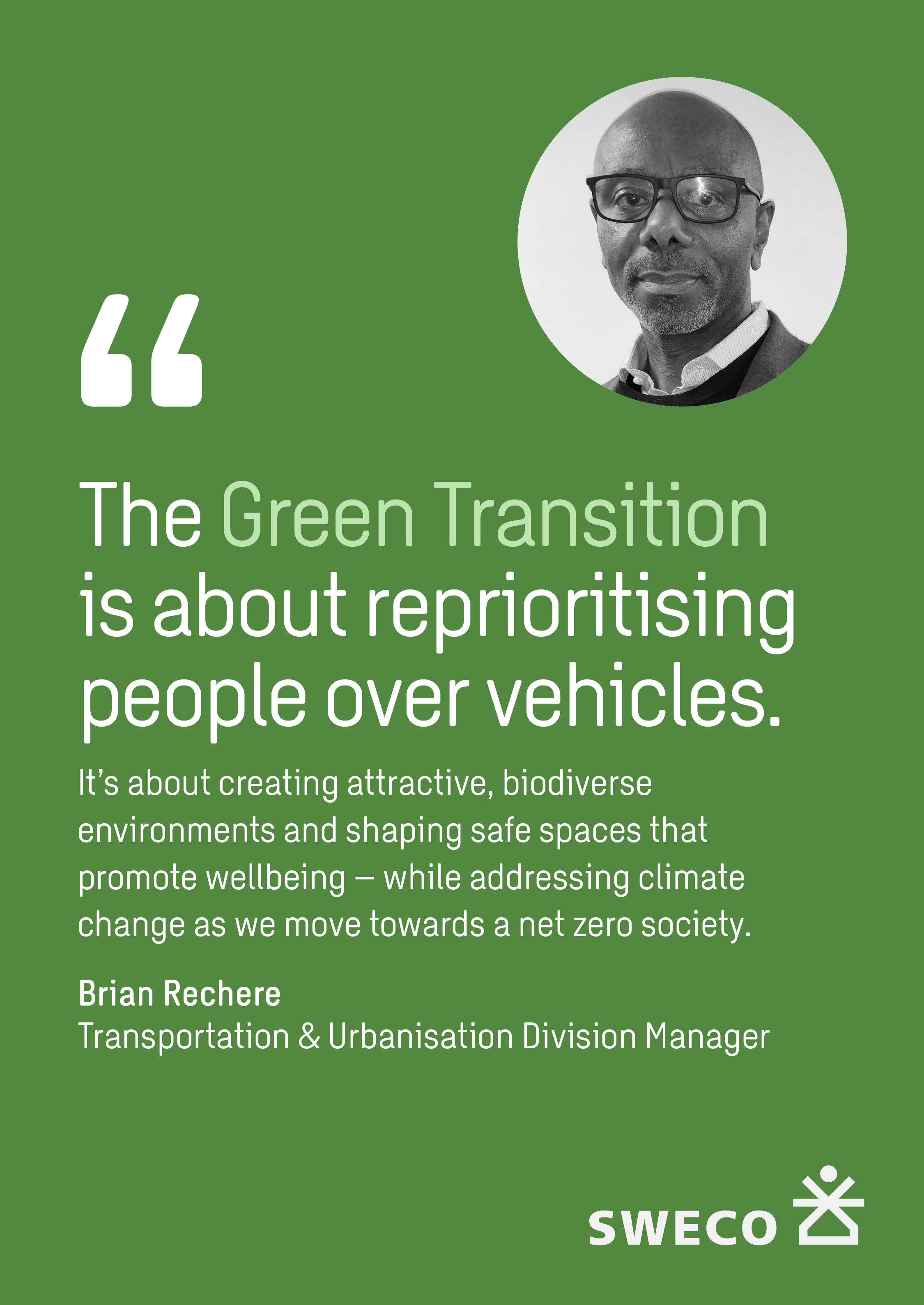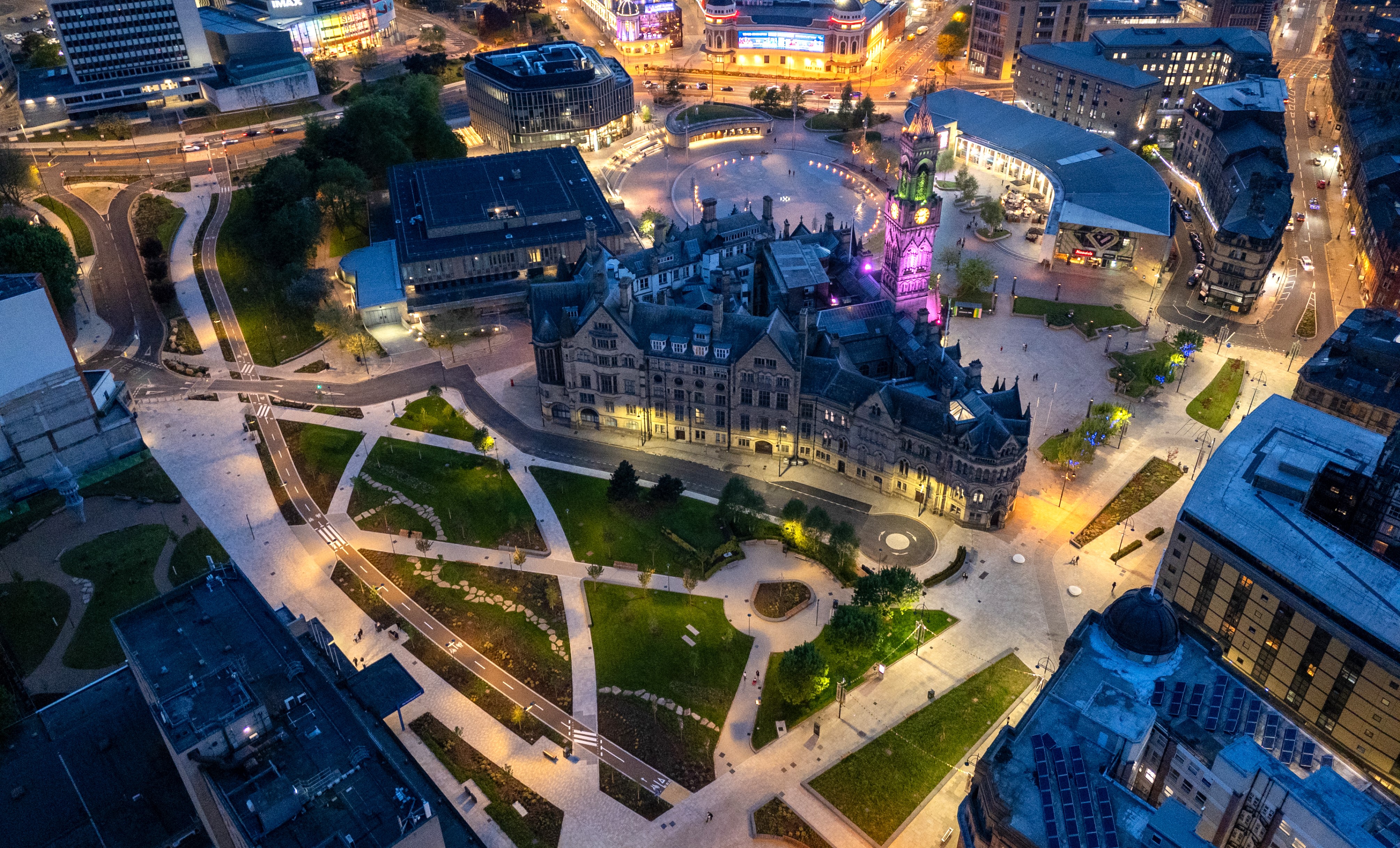Brian Rechere: The Green Transition is about reprioritising people over vehicles
At Sweco, we often talk about the Green Transition as both a challenge and an opportunity. But what does it really mean for the people leading projects on the ground? In this blog, Brian Rechere, Transport & Urbanisation Division Manager, reflects on how the Green Transition shapes his approach to clients and projects, and why protecting our planet is not just a professional responsibility, but a deeply personal one.
We always need to challenge ourselves by asking why we are designing it the way we are. It’s about asking ourselves: does our design make people safer during construction, operation and maintenance? Is it sustainable, minimising the impact on the environment? Does it contribute to improving people’s health and quality of life?
Brian Rechere, Divisional Manager for Transport & Urbanisation
Safety, sustainability and well-being
When I think about the Green Transition, three words come to mind: safety, sustainability and wellbeing. These aren’t buzzwords for me, they’re the principles I want to see embedded in everything we design and deliver.
For some, it’s a mindset shift. When we are designing, from a simple pavement rebuild or a major new highway scheme; we always need to challenge ourselves by asking why we are designing it the way we are. It’s about asking ourselves: does our design make people safer during construction, operation and maintenance? Is it sustainable, minimising the impact on the environment? Does it contribute to improving people’s health and quality of life – both physically and mentally? If we can answer yes, then we’re doing more than delivering infrastructure, we’re supporting the transition to a greener, more sustainable and just society.
Reclaiming streets and creating places
If I consider urban transport, it’s about placemaking as much as it is getting people and goods from A to B. Historically, our cities were designed for cars, often severing neighbourhoods and segregating communities with expansive multi-lane roads that lacked safe crossing points and carried thousands of motor vehicles every day pumping huge levels of pollution into the air. But what we’re seeing now is a shift towards reclaiming road space for pedestrians, cyclists and the like, reconnecting communities and creating spaces that people want and can actually get to, stay a while, meet friends, or just enjoy time locally outdoors.
Local authorities are saying: “We need to change. Air quality is an issue. Noise is an issue.” So, now there’s a movement to reclaim streets for people – to create places where communities feel safe and healthy, and where people want to spend time.
The same is true in mobility more broadly. Our clients are encouraging less reliance on car dependency and focusing on active travel networks that let people walk and cycle.

If I had to pick out one challenge for clients, it’s securing funding to deliver more sustainable outcomes. On many road schemes, limited funding results in having to prioritise how budgets are spent. When it comes to things like decarbonisation, clients want it on their projects, but funding constraints can often limit how much can be done. They may want to do more but can’t always afford it.
That’s why I want to get to a point where the decision to invest in decarbonising a project isn’t based on whether there is budget to do so. Rather, it will be embedded in our day-to-day delivery, using tools and resources that minimise the time and cost required to complete the activity. Whether or not clients ask for sustainable thinking explicitly, they get it as a ‘standard’ part of our delivery when they come to us, for little or no extra cost.
Projects showing the way
Almost any of our projects here at Sweco can tell a Green Transition story to some degree.
At Granton Waterfront, for example, we’re helping to deliver hundreds of acres of green space, active travel routes for walking and cycling, and far less space for cars. In Bradford and Wakefield, public realm projects are creating sustainable, wellbeing-focused environments.
Our active travel schemes not only offer healthier alternative travel options – they’re also designed to be built using low-carbon materials, minimise the transportation of goods, and cutting carbon through design choices.
What 2050 could look like
By 2050, I hope we’ll have delivered on net zero commitments – transitioning away from fossil fuels, moving more to electric and non-motorised vehicle usage, and shifting to renewable energy sources.
Beyond that, as populations in our towns and cities grow, maintaining and creating green, healthy environments where people can gather to enjoy the company of others in local hubs, minimising the number of petrol and diesel vehicles on our roads so as not to become overwhelmed by air and noise pollution, and creating safer shared spaces where people can actively pursue healthier activities. That’s what I’d like the future to look like in our communities.
The cost of doing nothing
The bigger picture: If we don’t continue to act in driving sustainability as a priority, we know the consequences. We are seeing the terrible impacts play out before us globally almost every day! We have recently seen average global air temperatures exceed the threshold 1.5°C above pre-industrial levels. If we see levels continue to climb, things will get messy.
It sometimes feels like we’re moving quickly in that direction with our eyes closed. A bit like the movie “Don’t Look up”. The science is there, the evidence is there – but too often the response is “it’s out of our hands or someone else’s problem.” And that’s not good enough.
Why it matters to me
For me, the Green Transition matters because I understand what’s at stake. We are seeing worldwide forest degradation caused by drought and wildfires, and the resulting stresses imposed on forest eco-systems. I’ve seen with my own eyes barren bleached coral reef whilst scuba diving, in stark contrast to vibrant living reefs full of colour and life.
These experiences bring home just how fragile and interconnected everything is. It troubles me – not only for myself, but for my daughter, her family, and the generations to come.
So, the Green Transition isn’t just important to me – it’s an urgent priority for us all.
Sweco and the Green Transition
The primary aim of the green transition is to steer away from traditional, fossil-fuel based energy systems and practices towards sustainable, environmentally-friendly approaches and technologies.
This societal shift is aimed at reducing environmental impact, combating climate change, and promoting a circular economy. It will draw upon initiatives that transform resource production and consumption, focusing on minimising carbon emissions, enhancing energy efficiency, and promoting biodiversity in urban and rural areas.
For Sweco, viewing projects through the green transition lens is essential to our mission of ‘transforming society together’, bringing to life our determination to be a leader and role model in the consultancy space in the green transition.
We’re proud to be taking responsibility for, and being a central part of, the solution to society’s sustainability and carbon problems – challenging our clients, and ourselves, to deliver digitally enabled, sustainable, innovative outcomes through technical excellence and expert consultancy across our whole portfolio.


